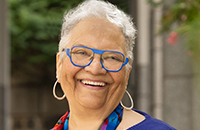
September was National Suicide Prevention Month. Public awareness about death by suicide, as well as prevention programs, has steadily increased. However, statistics do not reflect progress.
Suicide is the second-leading cause of death among youth between the ages of 14 and 17. Suicide rates for youth aged 10-14 tripled from 2007 through 2018, while the rates for those youth and young adults ages 10-24 have steadily increased from 2007 through 2021. This rate went from 6.8 deaths per 100,000 to 11.0, nearly doubling.
According to the National Alliance on Mental Illness (NAMI), 9% of high school students have made an attempt to end their life by suicide. These statistics are more than disturbing. They are telling us that our prevention efforts are not successfully reaching our most vulnerable population. We have to ask ourselves if we have been putting Band-Aids on the crises, rather than developing strategies and programs that focus on protective factors—which exist at various levels: individual; relationship; community; and societal. Perhaps we should look at some protective factors and explore how and when a child acquires these layers of protection against suicide risk.
Problem-solving and coping skills are two factors that help children navigate through difficult and sometimes traumatic situations. The recent suicide of a teenager in foster care in my state of Alaska reminded me that protection and safety of children in foster care requires more than just a change of living arrangements. It requires active engagement with the youth to help them acquire “effective” problem-solving and coping skills. Even if the state has custody of a child /youth, parental permission may still be needed to access health information. Child welfare workers do not know if a child’s health records contain relevant mental health information until after the records have been obtained. The problem-solving and coping skills of children with a history of attachment issues, academic issues in elementary school, anxiety, depression, etc., are usually very limited.
When a child/youth is not feeling connected to others, school, or community, they feel isolated. Yet, loneliness is often overlooked in clinical assessments. A colleague of mine, Jessica Sanigaq Ullrich, PhD, MSW, continues to explore the issue of connectedness in Indigenous communities, and how a child develops a sense of well-being when they feel connected to their culture and their community. Together, we have examined the disproportionate number of African American and Indigenous children in the child welfare system, and the impact of losing the connections to their culture and to their community. Place identity is another part of connectedness and self-identity. Many children in foster care do not have a sense of where they are from, a sense of belonging.
Finally, there is easy access to lethal means of suicide among youth at risk. Forty-six percent of youth suicides in 2017-2019 resulted from firearm injuries. It is no surprise that continued exposure to violent crime can negatively affect behavioral and health outcomes for youth. Adverse childhood experiences (ACEs) clearly show the correlation between the number of ACEs and negative outcomes. ACEs originated from a study conducted by the Centers for Disease Control and Prevention in 1995. And yet, almost three decades later, we are beginning prevention efforts “after” one or more traumatic incidents have occurred.
Advocacy is at the heart of social work. We know prevention works, but to be successful, we must help communities understand the importance of community; of having that connectedness that makes every child and family feel they are a part of a larger whole; that resources are available; and that every person in a community knows where to go for help.
Finally, in many cultures, there is stigma attached to seeking mental health services. In healthy communities, however, where connectedness is an integral part of the framework or fabric of the community, seeking help is viewed as positive, not negative. So, where do we start? Here are four steps in building strong communities, developed by Gary Melton and Robin Kimbrough-Melton. Their work, while focused on preventing child abuse and neglect, is about developing new connections within a community.
The four steps call for:
- Spreading the word to raise awareness and to identify opportunities for enhanced family support.
- Mobilizing the community to become engaged in developing and implementing plans to prevent youth suicide.
- Increasing the resources for families to obtain non-stigmatizing help whenever and wherever they need it.
- Institutionalizing the provision of resources so that help is sustained over the long term.
Let’s find our voice and help youth understand the meaning of these words from anti-apartheid activist Nelson Mandela: “The greatest glory in living lies not in never falling, but in rising every time we fall.”
Contact Yvonne Chase at president@socialworkers.org